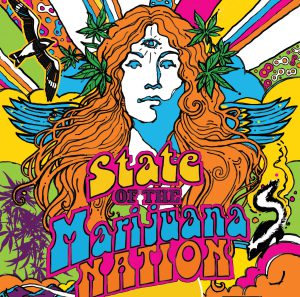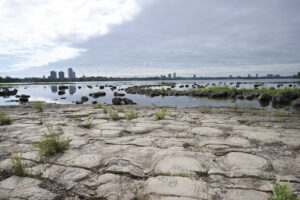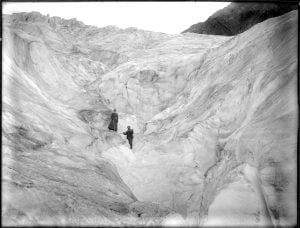
People & Culture
An appetite for life: A Greek immigrant’s journey of hearty food and hospitality
The story of Peter Kontolemos’ decision to open a steak restaurant in Mackenzie, B.C., as told by his daughter
- 1847 words
- 8 minutes
Travel
Dazzlingly whitewashed villas and houses with bright blue shutters and fiery red window box geraniums climb the hillsides sloping up from Hydra’s horseshoe-shaped harbour

We’re stuck in a donkey jam. The burro carrying my luggage up the steps of a steep winding cobblestone lane has encountered another pair of heavily laden beasts blocking a hillside intersection – one hauling a bathtub and another a bedroom dresser. Petros, my handsome donkey driver, calmly backs up his boys and the tangle dissolves with a clatter of hooves and a convivial laugh.
The four-legged taxi service drops me outside the traditional whitewashed stone house I’ve rented for a week. Welcoming me on an outdoor table is a basket of lemons from a tree shading our private courtyard as well as a huge jar of olives from the next tree over. “My wife made them,” my host, Yiannis, explains in broken English.
I am on the Greek island of Hydra (pronounced ee-drah) just 72 kilometres from Athens’ modern port of Piraeus, but I feel like I’ve travelled back to 1976, the only other time I’ve been to Greece. After three months backpacking in the Aegean Isles back then I swore never to return for fear of that magical adventure being marred by modern life.
Then I received an invitation to attend the wedding of long-time friends on Hydra last May. It was an island I had never visited and when I learned it was the only one in the country to long ago ban cars and motorcycles to preserve a 19th century ambiance, I felt that perhaps Hydra’s retro character might not tarnish my memories. Besides, if fellow Montrealer Leonard Cohen was impressed enough to buy a house there in the 1960s and return for most of the rest of his life, it warranted a look.

Dazzlingly whitewashed villas and houses with bright blue shutters and fiery red window box geraniums climb the hillsides sloping up from Hydra’s horseshoe-shaped harbour, creating an idyllic amphitheatre. My 90-minute Flying Dolphin hydrofoil docks, I disembark and immediately encounter the friendly donkey fleet – there are more than 500 donkeys on the island in all – patiently waiting along a wide seaside promenade lined in open air cafes and tavernas.
The island exudes a go-slow Boho atmosphere. Restaurants fill for long, lazy lunches, then empty during afternoon siesta. No one rushes. There are no hawkers. I browse galleries and tiny boutiques for souvenirs and locally-designed sun gear. Then I lounge in port-side cafes over strong, silty Greek coffee or sip Mythos beer and luscious ouzo watching the chic yacht traffic and fishing boats which barter their catches the moment they dock. Although waves of tourists briefly pass through the port on daily, multi-island visits, Hydra is surprisingly quiet mid-week, though weekends pick up pace, mostly with visiting Athenians.
The port begins to buzz again around 9 p.m. amid mouth-watering aromas of grilled calamari, garlic and roasting lamb wafting through the lanes and cobblestone squares bustling with candle-lit tables. I dine on grilled sardines, local olive oil roasted potatoes, crisp Greek salads and honey-soaked baklava under the watchful eyes of Hydra’s famed street cats. Dice clatter on backgammon boards, children chase soccer balls and donkeys bray. Then I traipse back uphill under moonlight along lanes littered pink with fallen bougainvillea blossoms, astonished that this island still exudes all the Old World charm, liveliness and lack of pretentiousness that made my first Greek visit half a century ago such a precious experience to me.

I’m surprised to find plenty to explore considering the island is less than 25 square miles. Strolling one of the cliff-side pathways out of the port, high above the rugged, rocky coastline there are spectacular views across the turquoise and indigo Saronic Gulf. Passing derelict windmills and ancient cannons pointing seaward I come across a dolphin statue commemorating the 1957 Boy on a Dolphin movie starring a scantily-clad Sophia Loren as a sponge diver for which the island was famed. There are postcard-pretty seaside hamlets like Kamini, Castello and Vlychos and everywhere there are churches since this island alone has over 300 for its 2,000 native Hydriots.
Passing rustic/chic eateries and traditional tavernas along the way – divine sunset-viewing outposts – I indulge in menus focused on old-fashioned-now-trendy freshly harvested local seafood, meats and seasonal vegetables.
There are a handful of small, pebbled beaches. Wearing a bathing suit under my shorts to seaside bars like my favourite, Spilia, which offers a concrete platform with a ladder into the sea, I swim before settling into a deck chair with a cocktail.
One cool day I hike up to the Prophet Elias Monastery, one of six on the island. It’s a steady, zigzag uphill stone path amid dusty smells of pine, eucalyptus and rosemary. Songbirds sing, swallows swoop and there are views of the port far below amid mauve bursts of flowering jacaranda trees. I could have ridden a donkey up to the 588-metre, 1813 Orthodox monastery with its grand, silent courtyard, church, bell tower and complimentary sips of monk-made liquor, but I would have missed the calorie-burn of that ecclesiastical Stairmaster.
I quickly settle into a relaxing daily routine, lounging in my courtyard over breakfasts of strong coffee and leek and spinach-stuffed filo pastry warm from the town bakery. One morning Yiannis knocks on my door, his scooped t-shirt overflowing with ripe plums. He’s also holding a key to take me into his family’s 1774 chapel within our walled courtyard, a tiny, treasure-filled enclave with the musty smell of centuries.
Poking through shops tucked into narrow lanes I track down the best Greek wines and feta cheese in town and pick up vine-ripened tomatoes, cucumbers and homemade bread at the Four Corners shop just up our street. That’s where I meet owner Maria Kontopithari and hear stories about Leonard Cohen who lived on and off for decades up the nearby lane now named after him. It was in Hydra that the famed poet/songwriter/singer wrote “Bird on a Wire” (which he observed when electricity cables first came to the island) and “So Long Marianne,” about his Norwegian muse, Marianne Ihlen, whom he met on Hydra. His children still visit, his son Adam recording his last album at the Hydra house.
The island has long been a magnet for musicians, artists and intellectuals like Henry Miller, Lawrence Durrell and French painter Chagall. These days there is still plenty of culture in an historical museum and a wealthy shipping magnate’s mansion. The art scene comes to life every summer at the Hydra School Projects, an annual fixture of international art. But I encounter the hub of Hydra’s creativity on a stroll 10 minutes outside the port on a seaside walk towards Mandraki beach. That’s where billionaire Greek/Cypriot collector Dakis Joannou transformed a former stone seaside slaughterhouse into his Deste Foundation’s Slaughterhouse Project which hosts the work of a different artist each season and attracts art aficionados from around the world from June through September. Jeff Koons is the 2021 summer star.
By the end of my week it’s clear that Hydra has taken me blissfully back to the idyllic Greece of my memory. When the low late afternoon light butters the clusters of white buildings it looks like classical Greece. But at a cocktail bar overlooking the sea, when the DJ picks up the pace with pounding hip hop tunes and everyone dances in the sunset, it’s obvious that no matter the era, Greece has a way of delivering moments of magic.

Hellenic Seaways offers passenger-only hydrofoil and catamaran departures several times daily from the port of Piraeus, a 30-minute subway or taxi ride from Athens. The trip takes 1½ to 2 hours. From $45 per person one way. Reservations recommended.
Orloff Hotel is a gracious 18th century Old World mansion-turned-boutique-hotel built on the remains of an old convent. Nine suites, secluded courtyards with homemade local breakfasts with marmalade from on site lemon trees. From $250 per night double with breakfast.
Greco Hotel is a quiet inn with 19 modern rooms in a traditional stone mansion. From $120/night for two with a full buffet breakfast included.
Veranda is a family-run fine Greek dining on a spacious veranda overlooking the Port of Hydra. Good selection of excellent Greek wines. Dinner for two from $60.
Ostria Café features grilled sardines and other seafood, salads, and in-season vegetables are fresh and simply prepared in a small but busy eatery run by the dynamic hostess Tusula and her chef-fisherman husband, Stathis. Lunch and dinner from $40 for 2.
Mandraki 1800 is an authentic family taverna alongside a chapel overlooking Mandraki, a beach 20 minutes on foot from the port. Lunch for two from $30.
Spilia Beach Club is a popular beach bar and café with deck chairs perched above a swimming platform a five-minute walk along the seaside path outside Hydra Port. Open all day. Cocktails and mezes and live music on weekend evenings. Lunch for two from $35.
Are you passionate about Canadian geography?
You can support Canadian Geographic in 3 ways:

People & Culture
The story of Peter Kontolemos’ decision to open a steak restaurant in Mackenzie, B.C., as told by his daughter

People & Culture
One year post-legalization, a look at Canada’s changing relationship with pot

Science & Tech
How peering into our ancient past could transform our understanding of contemporary climate change

History
Mary Vaux’s groundbreaking 19th-century study of B.C.’s Illecillewaet Glacier created an invaluable record of the glacier’s recession